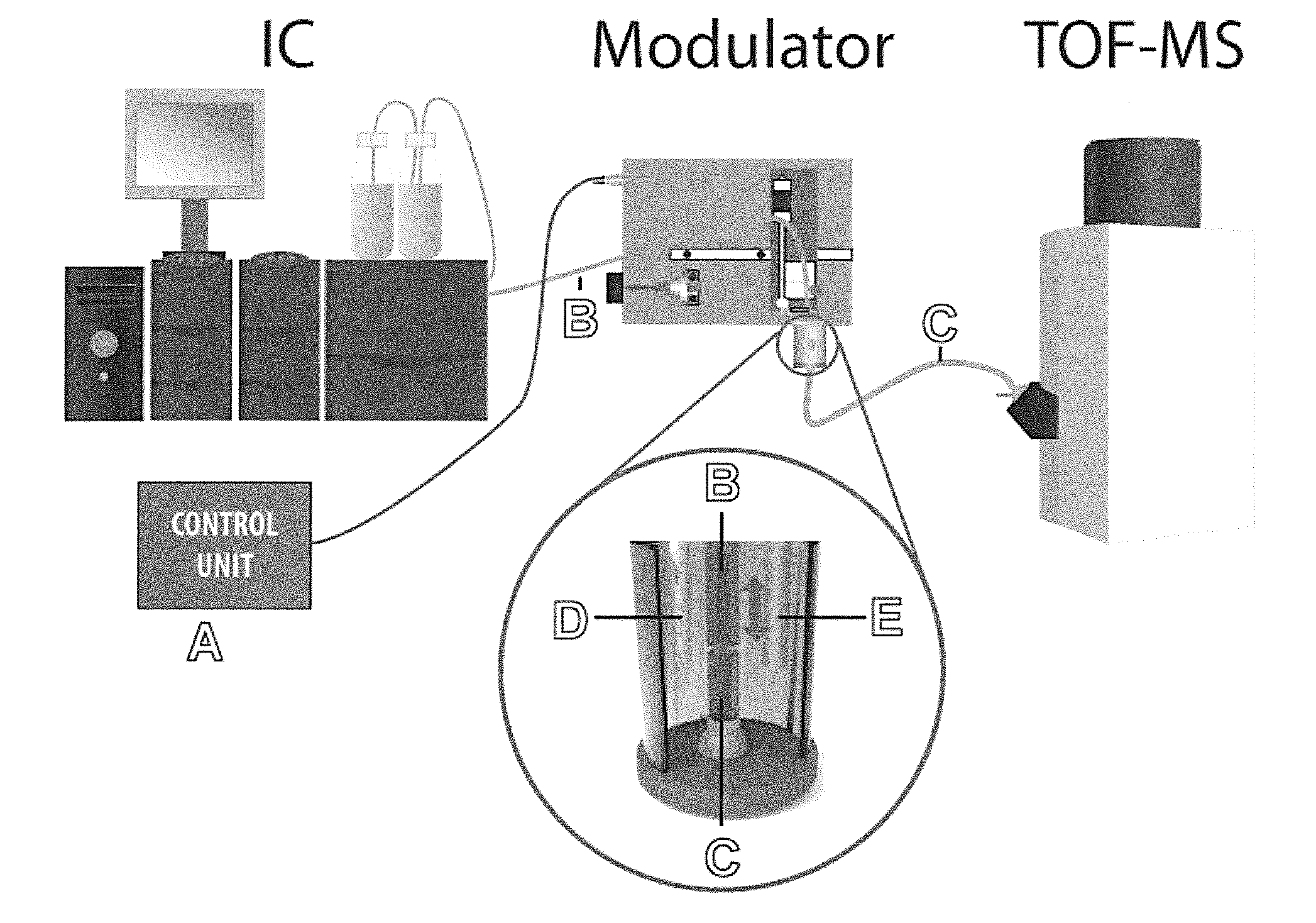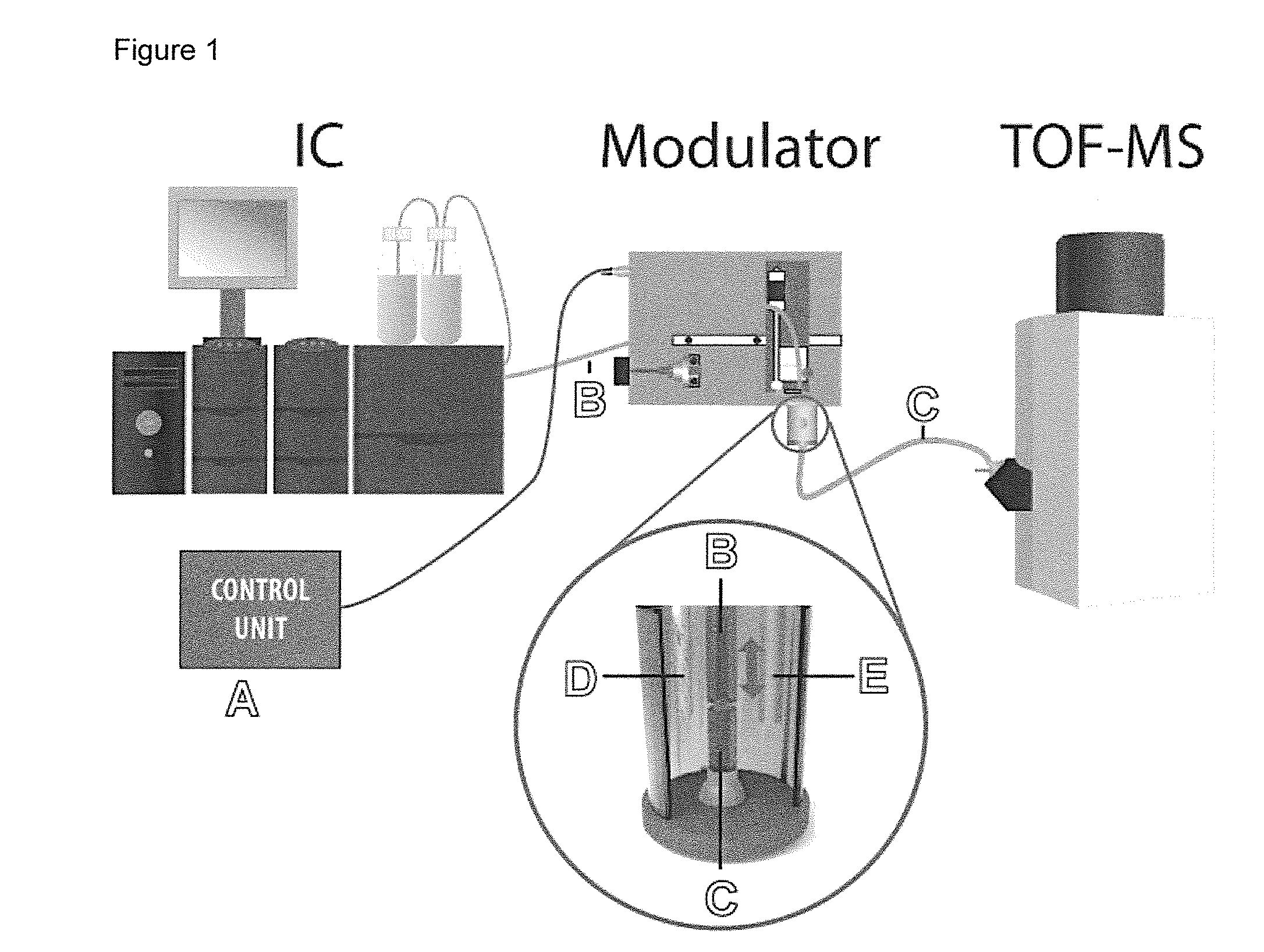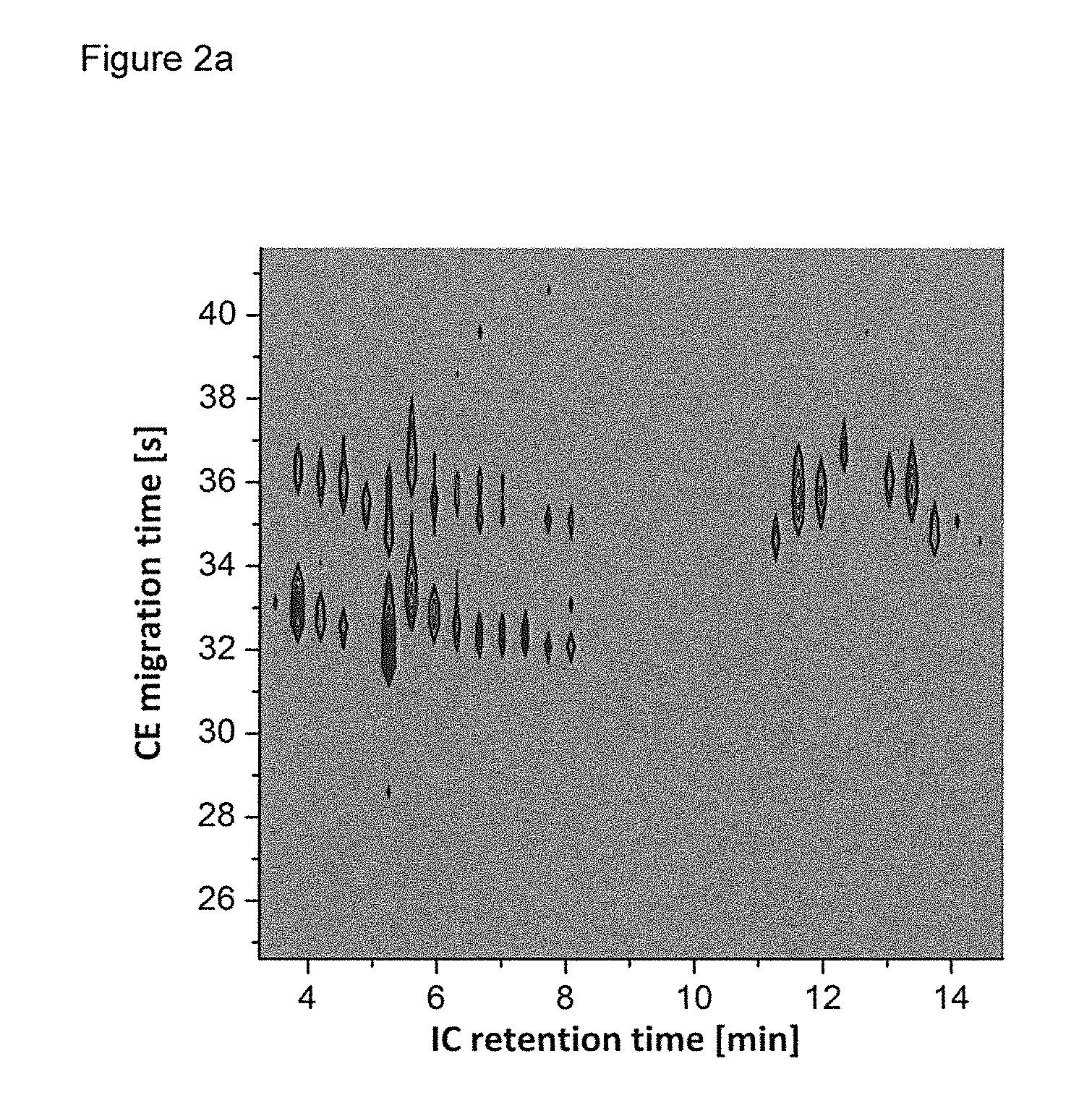Method and device for two-dimensional separation of ionic species
- Summary
- Abstract
- Description
- Claims
- Application Information
AI Technical Summary
Benefits of technology
Problems solved by technology
Method used
Image
Examples
example 1
[0073]A sample comprising nucleotides and cyclic nucleotides was subjected to a two-dimensional separation using ion chromatography (IC) and capillary electrophoresis (CE). The IC comprised a suppressor to provide effluent comprising the analytes in highly pure water.
[0074]The sample was injected into the IC system and continuously eluted. The IC effluent was transferred through a non-conductive transfer fused silica capillary to an electrolyte vessel of a CE system containing electrophoresis buffer. Nanoliter volume segments of the effluent were injected into the separation capillary of the CE system by continuously modifying the distance between transfer capillary and separation capillary. The distance between the outlet of the transfer capillary and the inlet of the separation capillary, which were in axial alignment, for injecting a nanoliter volume segment was moved such that the outlet of the transfer capillary had a distance of 50 μm to the inlet of the separation capillary. ...
example 2
[0080]A further sample comprising nucleotides and cyclic nucleotides was subjected to a two-dimensional separation using ion chromatography (IC) and capillary electrophoresis (CE) as described above in Example 1 with the following additional details.
[0081]Prior to using fused silica capillaries (Polymicro Technologies, Phoenix, Ariz., USA) in the separation techniques the capillaries were prepared and conditioned as follows. Both ends of the separation capillary (length=20.5 cm, inner diameter=25 μm) and the injection end of the transfer capillary (length=60 cm, inner diameter=75 μm) were polished with polishing papers (32 μm and 12 μm grit size) at a 90° angle until the surface was smooth. The polyimide coating was removed at a length of about 5 mm. Before each use, the separation capillary was flushed 10 minutes with 100 mM NaOH, 10 minutes with ultrapure water from a Milli-Q system, and 30 minutes with the background electrolyte consisting of a 25 mM ammonium acetate buffer adjus...
example 3
[0087]Modulation times of the IC×CE-MS measurements of a model system comprising a mixture of nucleotides (AMP, GMP, CMP) and cyclic nucleotides (cAMP, cGMP, cCMP) were studied and optimized as illustrated in FIG. 3. These experiments were performed without IC. Instead, a syringe pump (UMP3, WPI, Florida, USA), a microliter syringe (1000 μl Nanofil syringe, WPI), and a fused silica injection capillary (inner diameter=75 μm) were used. The injection capillary was axially aligned with the separation capillary and moved periodically up and down from injection to preinjection positions while the sample was expelled continuously with a flow rate of 5 μl / min. The syringe was filled with a model solution containing 150 μM AMP and 50 μM cAMP in pure water. The CE high voltage source was permanently set to 22.5 kV. To optimize the injection times, measurements were performed with injection times of 1, 2, 4, and 8 seconds whereas the preinjection time was kept at 15 seconds. Furthermore, the ...
PUM
| Property | Measurement | Unit |
|---|---|---|
| Time | aaaaa | aaaaa |
| Time | aaaaa | aaaaa |
| Flow rate | aaaaa | aaaaa |
Abstract
Description
Claims
Application Information
 Login to View More
Login to View More - R&D
- Intellectual Property
- Life Sciences
- Materials
- Tech Scout
- Unparalleled Data Quality
- Higher Quality Content
- 60% Fewer Hallucinations
Browse by: Latest US Patents, China's latest patents, Technical Efficacy Thesaurus, Application Domain, Technology Topic, Popular Technical Reports.
© 2025 PatSnap. All rights reserved.Legal|Privacy policy|Modern Slavery Act Transparency Statement|Sitemap|About US| Contact US: help@patsnap.com



